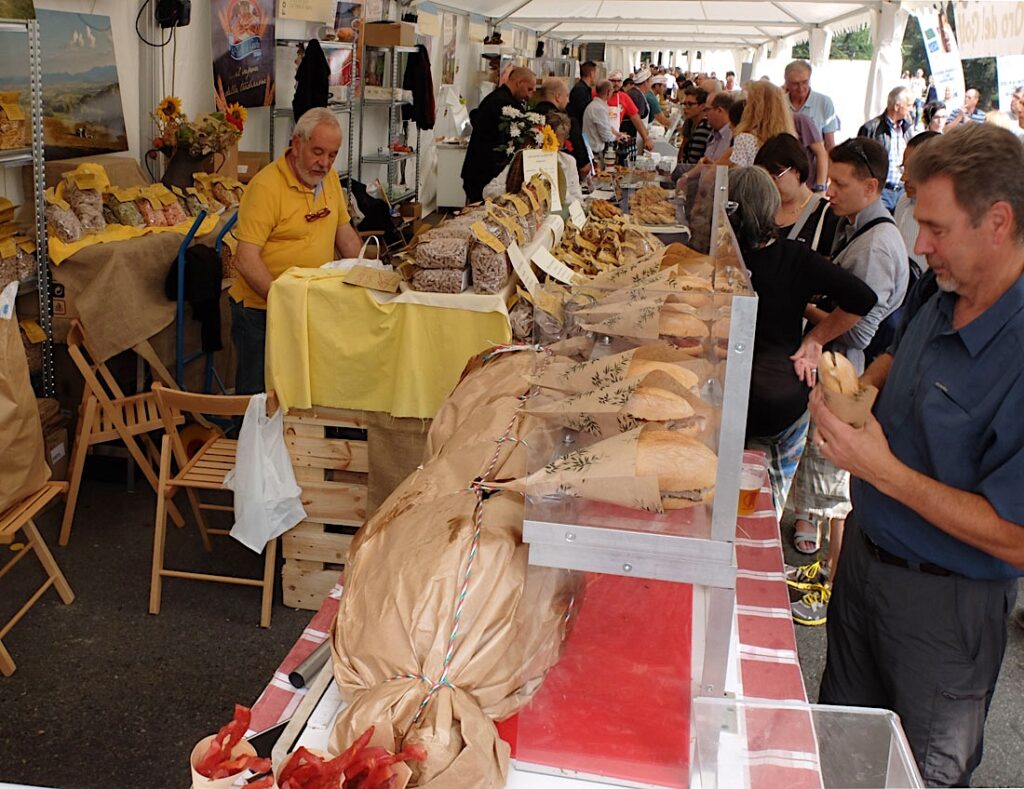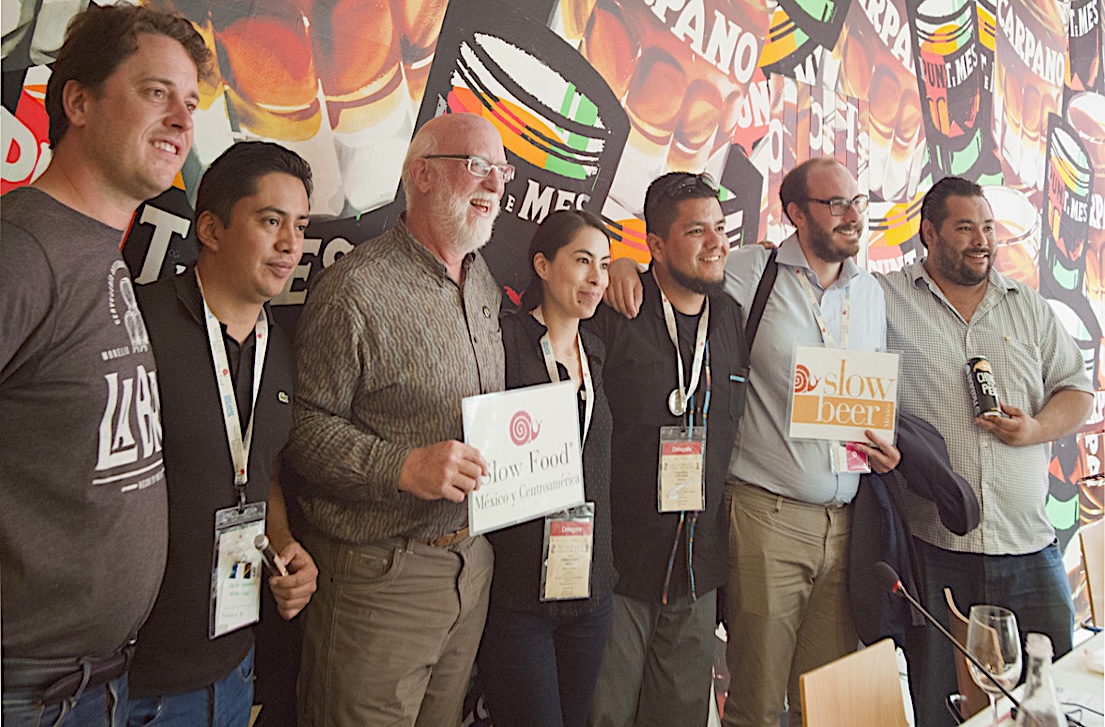© 2016, Randy Mosher
I was delighted to receive an invitation to present at a workshop by the Mexican Slow Beer delegation at the 2016 Slow Food Salone del Gusto in Torino, Italy.
Previously I had helped judge the Slow Beer competition in Celaya, Guanajuato, Mexico. That event featured the usual mix of beers: some with problems, some that just should have taken things a little further, and a few sublime creations that really deserved their medals. This group was invited to share their experiences and present a few of the winning beers and discuss the relationship between them and the rare or special ingredients they incorporated.
Pictured above, from left to right: Matthew Hikory of La Bru, Arturo Elías García Gonzales of AKIH, producers of exquisitely fine Oaxacan vanilla that was used in Matt’s beer, myself, Lucia Carillo of Cervecería La Cirquera and a couple of other projects, Sergio Michel Lopez Marin of Cervecería Ramury, Eugenio Signoroni, editor of the Slow Food guide to beer in Italy and Alfonso Rocha Robles, director of Slow Food Mexico y Centroamerica.
We discussed the context and nature of the competition, which was a fairly standard judging, but of beers that were brewed using ingredients that Slow Food is working to promote and preserve. Sergio showed off a porter brewed from wood-roasted agave hearts and a red ale brewed from cacao flowers, known in Mexico as rosita de cacao, with their complex, magical aroma. Next was an imperial stout brewed with artisanal piloncillo sugar. Matt presented his masterful Winter Ale, brewed using star anise and vanilla, two of the most overbearing ingredients known in the world of cuisine, along with some local piloncillo to lighten the body. Masterful, and well deserving of its best-of-show status.
If you consider yourself a food person, Salone del Gusto should be near the top of your bucket list. This vast food festival sprawls across the central part of Torino, a pretty city situated in the heart of Piemonte, considered to be among Italy’s best wine and food regions, no mean feat.
The photo below shows a typical scene at the market that snaked through a huge park by the river Po, and probably held at least two miles of stalls organized by region, with everything for sale and also available as free samples, bite by bite. The craft-paper bag on the counter holds a freshly-roasted porchetta. The man contemplating the sandwich as if it were his last is my old friend Ray Spangler. In addition to the market, there areas dedicated to gelato, beer, honey, regional foods and an enoteca (for wine) in the royal palace courtyard.


